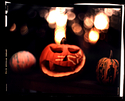NortheastPhotographic
Advertiser
I saw some wood block prints displayed recently that were squares, and the print area was embossed into the paper. Just sort of impressed into it. The paper had a lovely deckle edge, and the entire piece was floated in a frame with no matte. It had a nice 3D presence for a 2D piece.
I'm wondering if this is possible with a matte pigment inkjet print? I'm using Museo Max, and if I could emboss the image area I think it would be a really nice presentation for a frame.
Any thoughts? I don't know much of anything about embossing.
I'm wondering if this is possible with a matte pigment inkjet print? I'm using Museo Max, and if I could emboss the image area I think it would be a really nice presentation for a frame.
Any thoughts? I don't know much of anything about embossing.






